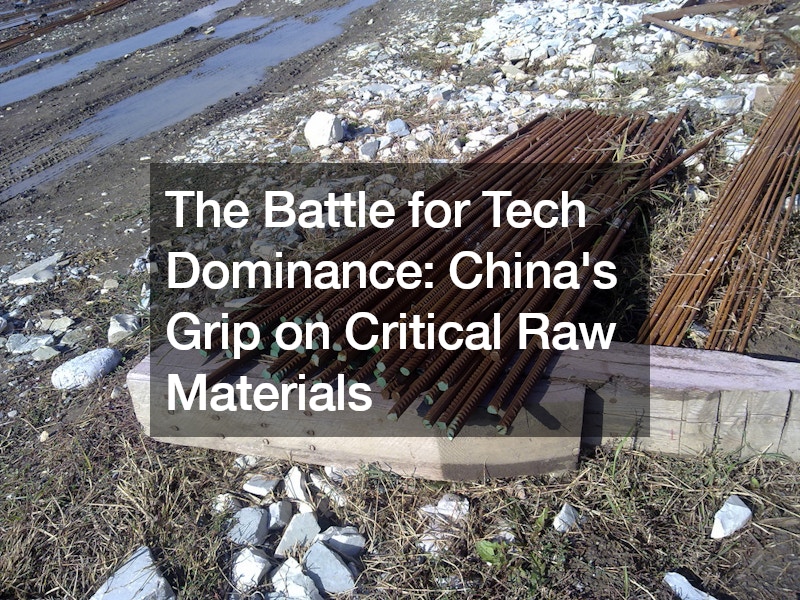In the intricate web of global technological advancement, certain raw materials serve as the unsung heroes, indispensable yet often overlooked. Gallium and germanium, soft silvery metals with properties vital for semiconductor manufacturing, stand at the forefront of this technological revolution. However, recent geopolitical tensions have thrust these elements into the spotlight, highlighting China’s stranglehold on the global supply chain and its implications for the future of tech dominance.
Gallium and germanium, nestled between zinc and arsenic on the periodic table, play a pivotal role in a wide array of high-tech applications. From powering electric vehicles to fueling the AI revolution and fortifying defense systems, these elements are the secret sauce behind many cutting-edge innovations.
Semiconductor manufacturing, in particular, relies heavily on gallium and germanium for their unique electrical properties, essential for producing advanced microchips powering modern devices.
China’s ascent as the world’s manufacturing powerhouse has granted it a near-monopoly over the global supply of gallium and germanium. An EU study reveals that China accounts for a staggering 94% of the world’s gallium supply and 83% of germanium. This dominance has not gone unnoticed, prompting concerns among other tech-reliant nations about their overreliance on Chinese supply chains.
The United States, Japan, Germany, and the Netherlands, among others, have long been major importers of these critical raw materials china. However, recent geopolitical tensions, particularly between the US and China, have sparked fears of supply disruptions and heightened competition for access to these essential resources. In October, the US imposed restrictions on China’s access to equipment used in high-tech chip manufacturing, citing concerns over Beijing’s technological ambitions and its potential military implications.
In response, China retaliated by rolling out its own restrictions on the export of gallium and germanium, signaling its willingness to leverage its control over these crucial materials in the ongoing tech tit-for-tat. Analysts warn that this move goes beyond mere trade skirmishes, underscoring China’s strategic advantage in holding the keys to the semiconductor kingdom. By controlling the supply chain of these raw materials, China asserts its dominance and signals its readiness to wield economic leverage in pursuit of its technological aspirations.
The implications of China’s grip on critical raw materials extend far beyond the realm of geopolitics. The high processing costs associated with gallium and germanium make finding alternative sources a daunting task for countries seeking to diversify their supply chains. While these elements are not inherently rare, the complexities of extraction and processing pose significant challenges to achieving self-sufficiency outside of China’s sphere of influence.
Moreover, China’s ability to sell these raw materials at competitive prices further solidifies its position as the primary supplier in the global market. As countries grapple with the dilemma of balancing technological advancement with geopolitical stability, the issue of raw material dependency looms large on the horizon. The prospect of supply disruptions or price fluctuations underscores the vulnerability of nations reliant on Chinese supply chains and underscores the urgent need for strategic diversification.
Efforts to counter China’s dominance in the raw materials sector have gained momentum in recent years. Initiatives aimed at developing alternative sources of gallium and germanium, as well as bolstering domestic production capabilities, have been proposed by various stakeholders. However, overcoming the entrenched advantages enjoyed by China in this arena will require concerted international cooperation and long-term investment in research and development.
In conclusion, the battle for tech dominance is increasingly being fought on the frontlines of raw material supply chains. China’s control over critical elements like gallium and germanium gives it a significant advantage in shaping the trajectory of global technological innovation. As the world navigates the complexities of a rapidly evolving geopolitical landscape, the importance of diversifying supply chains and reducing dependency on single-source suppliers cannot be overstated. The race to secure access to these essential raw materials will undoubtedly shape the future of technology and determine the balance of power in the digital age.
.

